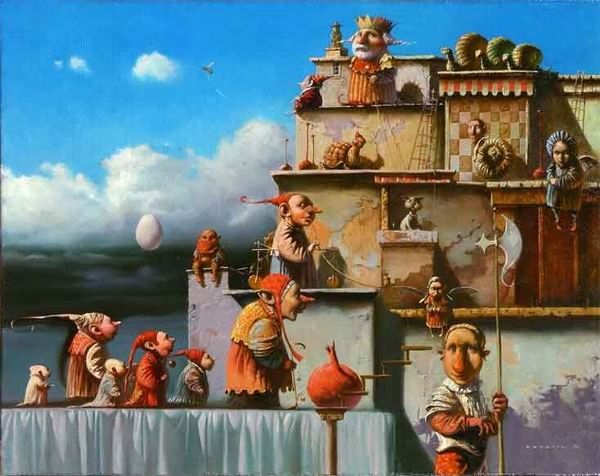
Origins of a Serious Chronic Disease: Chess Blindness
HOW TO MINIMIZE RISKS OF THE AILMENT AFFECTING MILLIONS.
It is becoming necessary for the attention of chess educators, instructors, coaches, trainers and teachers, to be drawn to one circumstance which seems to be so slight that they do not even consider it their duty to notice it. That thing is the following: they are responsible for the unchecked spread of a serious condition infecting an entire population. Where? In the mind of chess beginners, causing a severe, chronic disorder, called poor chess vision.
And chess educators, do they see it? No, they do not. Is this intentional? No, it is professional.
This what the human race (by way of cognitive sciences, complex/emergent system's theory, relational theory, educational psychology, learning theory) knows all too well in the 21-st century, chess educators simply ignore.
.

An example of poor poor board vision I witnessed in an after-school program btw two boys 7 mos in chess at the time. Amazingly, White played 3.exd5 in this position
.
How is the infection caught? We are being infected during the very first chess lesson. Our teachers unwittingly infect us when using the traditional way which teaches no essential key concepts whatsoever (replacing them with tons of unnecessary details and rules), is ineffective and "fundamentally false" (Nimzovich's First Lesson, Shakhmatny Listok, How I Became a Grandmaster, 1929; first published in English in 1974, Nimzovich: The Reappraisal by GM Raymond Keene; the first full version of the Lesson is mine in The Chess Journalist of America, Vol XL No 4, Fall 2011 - the above link; there is another version by Alexey Spectre @Spektrowski on this site in 2013).
If then, one day, we teach someone, we are spreading the virus in the same fashion.
The virus infects our mind, it takes over parts of the brain, programming us with habits and instructions that point our thought process in the wrong direction. The virus gets us off the right track that would otherwise enable good chess vision. Thus, it ultimately fails us in a lifetime enjoyment in the game.
.

An example of good chess vision (Mag. 64, 2001-07)
.
The infection and resulting disease slow down our early progress in chess. Since all this happens unconsciously, we feel, as we go, that chess becomes less and less fun, more of a drag due to lack of meaning and understanding. We suffer through many defeats in the very beginning. Yet, we all love success with our hard wired impulse to triumph. Without it, we may feel our motivation is slipping away. We may get less excited about chess following the initial burning enthusiasm. Finally, we may totally lose our confidence and interest in the game and, sadly, give up altogether.
The moment has come for us to raise our voices. There are moments when even the human conscience can take the stand and order chess educators to listen.
We can certainly stop infecting future generations of players. What we need is a paradigm shift. This happens when one of the basic, underlying assumptions we’ve been living with, changes. Every paradigm shift takes time and lots of effort to penetrate the teaching community to start adopting it and, even longer, to become generally accepted.
The time has come for this old way of teaching to be replaced by a new one. No matter how dark the night may be, the horizon at the end must bathe in daylight.
Better chess starts with better chess vision.
Better chess vision should start with the concept of Force and piece interactions/relationships that they get into fighting chess battles.
It is a new starting point. It is there that the entire future lies.
And the future will, what is being done, come to pass.
This is the aim, this is the harbor. Until yesterday, it was only the truth, today it is a reality.
* * *
The manifesto is structured after Victor Hugo's plaidoyer 'Pour la Serbie' (1876)
"Il devient nécessaire d’appeler l’attention des gouvernements européens sur un fait tellement petit, à ce qu’il paraît, que les gouvernements semblent ne point l’apercevoir. Ce fait, le voici : on assassine un peuple. Où ? En Europe. Ce fait a-t-il des témoins ? Un témoin, le monde entier. Les gouvernements le voient-ils ? Non…"

